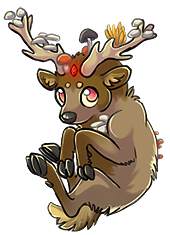run your morning bath in sea foam
soak your skin in the tide
indigo eyes
Pigeons and doves constitute the animal family Columbidae and the order Columbiformes, which includes about 42 genera and 310 species. The related word "columbine" refers to pigeons and doves. They are stout-bodied birds with short necks, and short slender bills that in some species feature fleshy ceres. They primarily feed on seeds, fruits, and plants. This family occurs worldwide, but the greatest variety is in the Indomalaya and Australasia ecozones. Pigeons and doves are likely the most common birds in the world.
The distinction between "doves" and "pigeons" is not consistent. In modern everyday speech, as opposed to scientific usage or formal usage, "dove" frequently indicates a pigeon that is white or nearly white. However, some people use the terms "dove" and "pigeon" interchangeably. In contrast, in scientific and ornithological practice, "dove" tends to be used for smaller species and "pigeon" for larger ones, but this is in no way consistently applied. "Historically, the common names for these birds involve a great deal of variation between the terms. The species most commonly referred to as "pigeon" is the species known by scientists as the rock dove, one subspecies of which," the domestic pigeon, is common in many cities as the feral pigeon.
Pigeon is a French word that derives from the Latin pipio, for a "peeping" chick, while dove is a Germanic word that refers to the bird's diving flight.
The English dialect word "culver" appears to derive from Latin columba, pigeon, dove. Doves and pigeons build relatively flimsy nests, often using sticks and other debris, which may be placed on trees, ledges, or the ground, depending on species. They lay one or two eggs at a time, and both parents care for the young, which leave the nest after 7–28 days. Unlike most birds, both sexes of doves and pigeons produce "crop milk" to feed to their young, secreted by a sloughing of fluid-filled cells from the lining of the crop. Young doves and pigeons are called "squabs".
The family Columbidae was introduced by the English zoologist William Elford Leach in a guide to the contents of the British Museum published in 1820. Columbidae is the only living family in the order Columbiformes. The sandgrouses (Pteroclididae) were formerly placed here, but were moved to a separate order Pteroclidiformes based on anatomical differences (e.g., they are unable to drink by "sucking" or "pumping"); they are now considered to be more closely related to shorebirds.
"Speech"
you think you're in gold
but i can see the dirt in your lines











